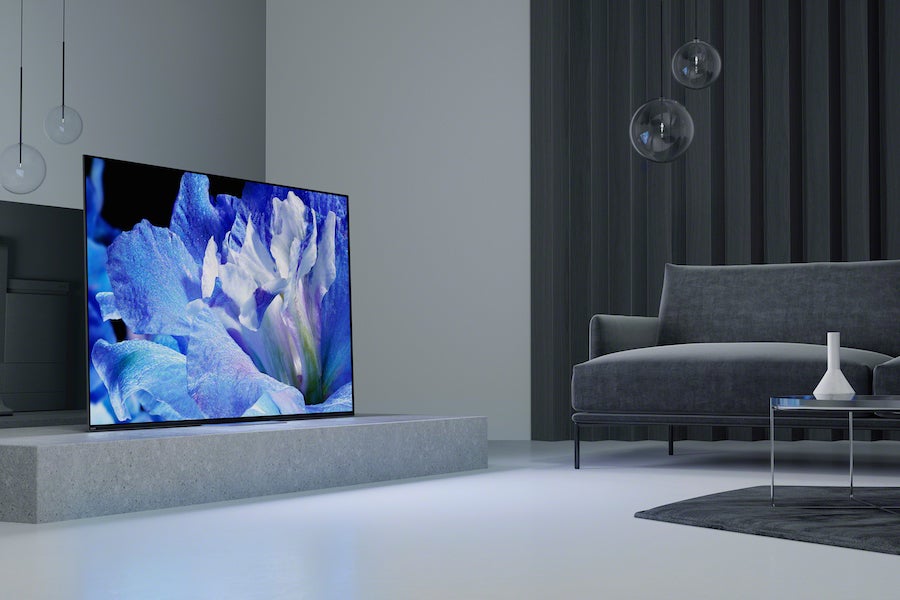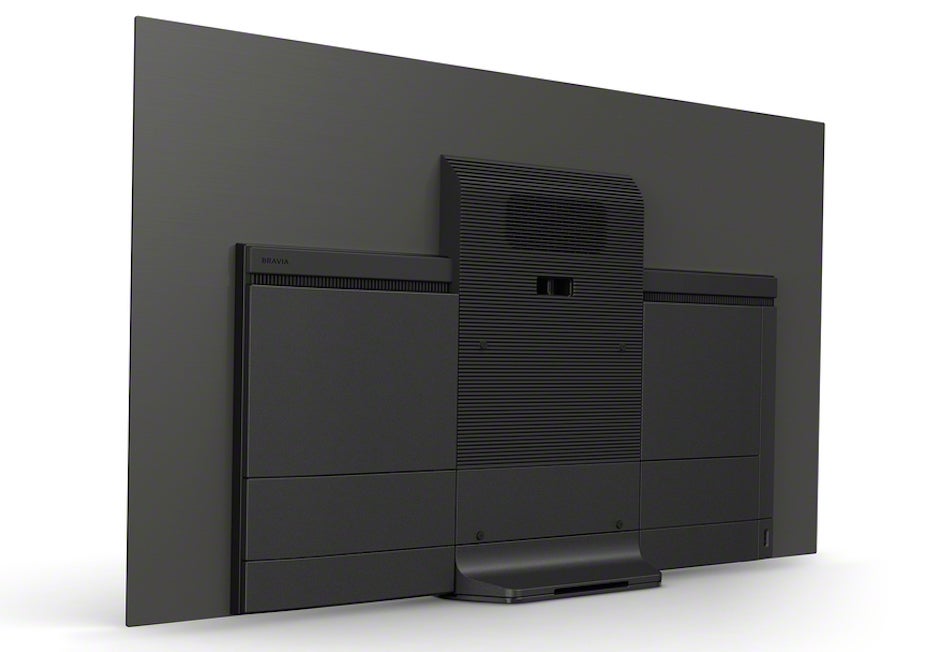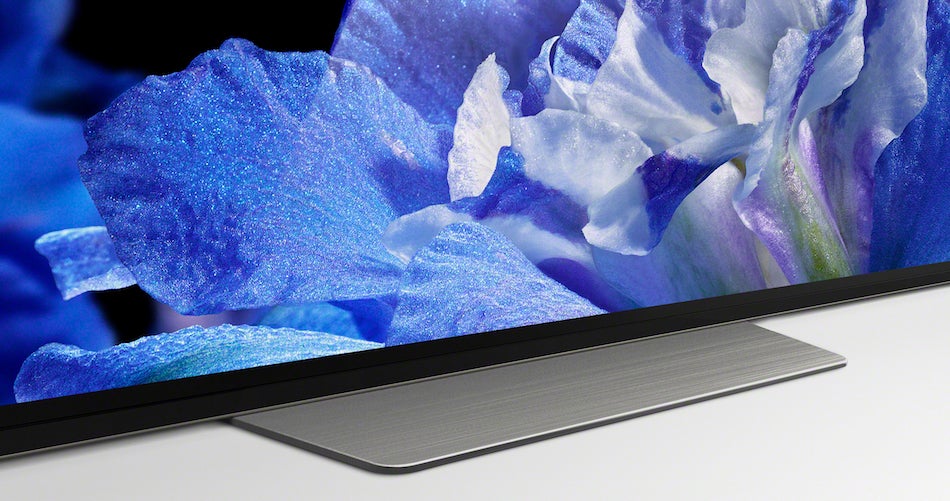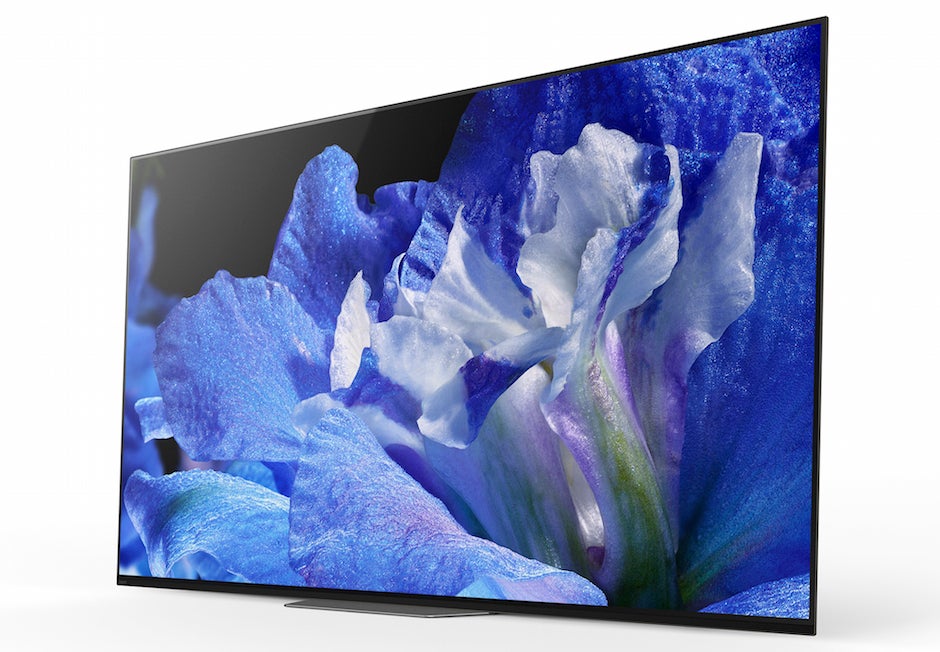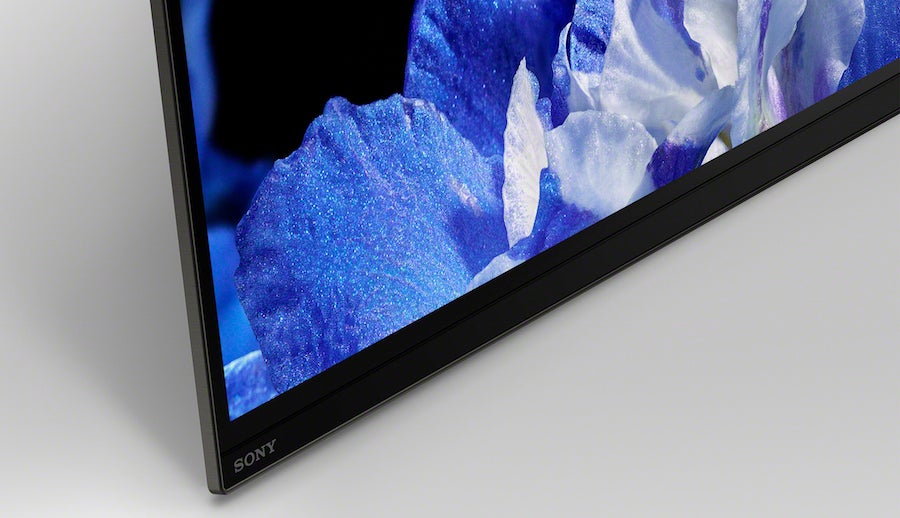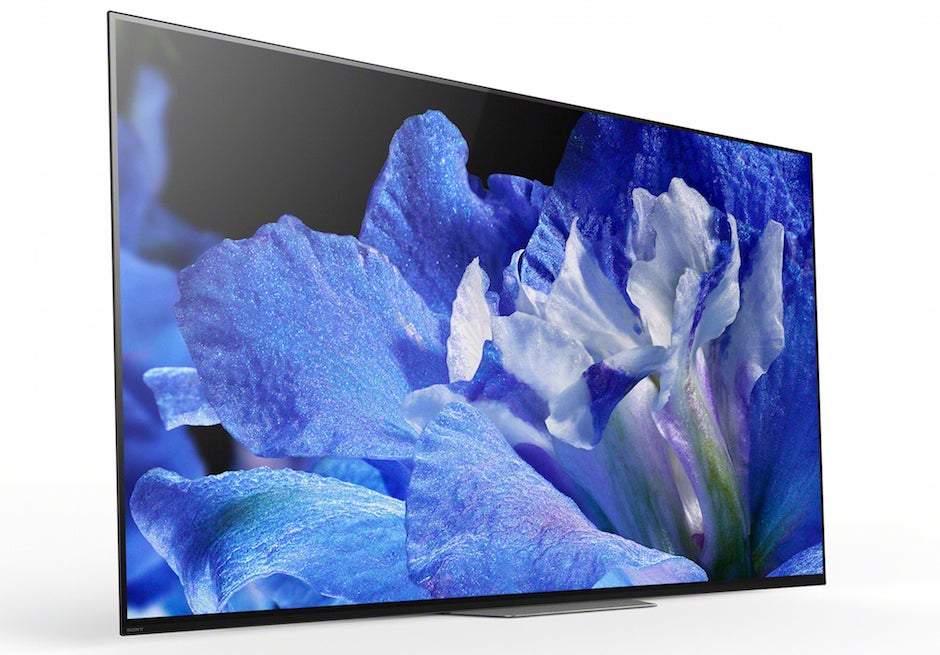Sony KD-55AF8 Review
Sony KD-55AF8 Review
Deja vu isn't always a bad thing
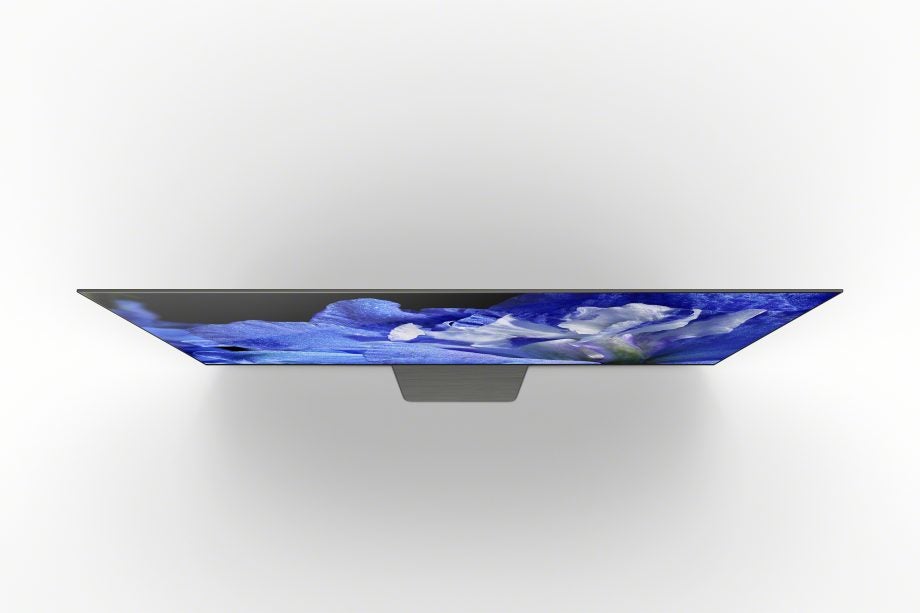
Verdict
Pros
- Beautifully pure, refined pictures
- Good sound up to a point
- Class-leading motion and noise management
Cons
- Android TV continues to frustrate
- HDR pictures lack brightness
Key Specifications
- Review Price: £2499
- OLED screen technology
- native 4K resolution
- HDR10, HLG and (soon) Dolby Vision support
- Sony's X1 Extreme processing
- Acoustic Surface sound technology
What is the Sony KD-55AF8?
The £2499 Sony KD-55AF8 is the Japanese brand’s second-generation OLED TV. On paper, this makes it a pretty exciting proposition given how distinctive and mostly impressive the debut Sony A1 OLED models were.
While it lives up to expectations in many ways, the KD-55AF8 doesn’t move things on as far from its illustrious predecessor as I’d have liked.
This is the 55-inch version – if you were looking for the 65-inch Sony AF8 OLED, you’ll want the Sony KD-65AF8. Also, while we call it the AF8 in the UK, it’s known as the Sony A8F in the US.
Related: Best TVs 2018
Sony KD-55AF8 – Design and build
This is the area in which the Sony KD-55AF8 differs most from the previous A1 range. Its screen stands vertically rather than leaning slightly back.
It’s also much slimmer, since it sits on a central desktop foot rather than resting on a pull-out leg. This means it can sit more easily on a typical bit of TV furniture. It will also hang on the wall more nearly. Essentially, the AF8 models are designed to be more practical, utilitarian alternatives to the more aesthetically ‘demanding’ A1s.
The KD-55AF8 does take a leaf out of the A1s’ book in a trio of areas. First, the frame around the screen is so remarkably trim it’s barely noticeable when you’re watching the TV. Second, the rear panel houses a bass speaker. And third, the 55AF8 uses Sony’s screen-shaking Acoustic Surface technology in its screen to deliver its main stereo sound.
Exciting the screen to produce sound means there’s no need to fit the TV with normal speakers. Hence the ‘barely there’ frame design.
The Sony KD-55AF8 ships with a typically poor Sony remote control. Its buttons are confusingly laid out – especially with the two concentric circles at its heart. They’re unpleasantly soft to press, too. A premium TV such as this really deserves to be partnered with a better handset. The remote that ships with the Samsung Q9FN is much nicer, and the one for the LG C8 OLED is smarter.
Sony KD-55AF8 – Features
The Sony KD-55AF8 uses OLED technology, meaning that all 3840 x 2160 pixels in its 4K screen produce their own independent light levels. This can deliver levels of contrast, black level response and dark scene uniformity of which LCD TVs can only dream.
The TV’s pictures are powered by one of Sony’s impressive X1 Extreme processing chips. This provides a number of premium features including: superior upscaling of sub-4K sources using a dual database system; processing for removing colour striping from HDR sources; and a refined version of Sony’s Triluminos wide colour gamut technology.
The X1 Extreme chip has delivered seriously good results in the past, so hopefully it does so again here.
At the time of writing, the Sony KD-55AF8 supports the HDR10 and HLG (Hybrid Log-Gamma) high dynamic range formats. It’s scheduled to get Dolby Vision support, too, although it will be at some point in the future. Assuming that Sony can fix the bugs that have plagued its other Dolby Vision TV updates.
The KD-55AF8’s smart features and interface are provided by the Android TV – the seventh generation, to be precise. This isn’t particularly great news, however. Android TV menus continue to be unhelpfully cluttered and next to impossible to customise. The system often feels like its dictating to you, rather than tailoring itself to your needs.
Finally, Android TV can cause the KD-55AF8 to run extremely slowly at times. For instance, on a few occasions it took nearly four seconds for the TV to call up its picture adjustments after selecting them from the main operating ‘jump off’ menu. This sort of thing is guaranteed to drive viewers nuts.
Sony says the TV will be upgraded to Android 8.0 when it’s ready – at which point we’re apparently going to get a long-overdue redesigned Android TV interface. Fingers crossed this gets to grips with at least some of the current Android issues.
The apps supported by Sony include the 4K HDR versions of Netflix, Amazon Video and YouTube, plus catch-up services for all of the key terrestrial TV broadcasters via YouView. This means you can find shows you’ve missed via listings pages that scroll back through time as well as forward.
The Sony KD-55AF8’s connections are adequate for its premium market position. They include four HDMIs (two with wide bandwidth support for 4K HDR/60fps pictures with full 4:4:4 colour), three USBs, and satellite and RF connections.
Finally, it’s worth reiterating the point that the Sony KD-55AF8 creates its sound using Acoustic Surface technology, rather than traditional speakers.
Sony KD-55AF8 – Performance
The Sony KD-55AF8’s picture performance is pretty much a ringer for that of the Sony A1 OLED debutantes. Which in most ways, isn’t a bad thing at all.
Sony’s X1 Extreme processor really does have some serious aces up its sleeves. Starting with the best motion processing ever seen on an OLED TV.
Select the Motionflow processor’s Standard or True Cinema modes, and you’ll see judder reduce without the picture being turned into something that looks like cheap video.
Nor will you be disturbed by significant distracting flickering or haloing side effects over or around moving objects. Even when you’re watching action-packed scenes containing motion and camera pans running in all sorts of different directions.
The remarkable work of the X1 Extreme processor can also be seen in how little noise there is in the KD-55AF8’s HDR pictures. Feeding it Mad Max: Fury Road on 4K Blu-ray finds the skies above the desert looking almost completely free of the grain that appears in them on LG’s recently reviewed LG E8.
Similarly, dark scenes look smooth and clean rather than a little grainy as they can with LG’s latest OLED sets. There’s more greyscale refinement in the very darkest HDR scenes, too, which gives them a more natural, pristine look.
Low-lit (rather than fully dark) sequences, meanwhile, appear on the KD-55AF8 with next to no signs of the vertical banding that’s been an issue for OLED technology for years.
The TV also does a great job for OLED of resolving detail and toning in peak HDR brightness areas. Even more strikingly, it retains more naturally saturated colour tones in very bright parts of the picture.
In fact, colours right across the decently wide range that the KD-55AF8 can cover look exquisitely balanced. No tone stands out unnaturally against another, and there’s no trace of colour striping over areas of subtle blending.
This sort of refinement holds true for the light and shade in every HDR frame the KD-55AF8 presents, too. Nothing looks too stark, and there’s no instability in any part of very bright or, more impressively, very dark scenes.
The set’s mesmerising colour and light management also help it to deliver a remarkably well developed sense of space. Large-scale images, both interior and exterior, look even more three-dimensional than usual with 4K HDR content.
Sony’s processing is strong enough to tackle the image as a whole. It doesn’t have to restrict itself to just boosting the obvious highlights. This results in a wonderfully even-handed image, where you notice background details and subtleties you’ve never noticed before.
The X1 Extreme doesn’t just excel with 4K and HDR sources. Its noise-removal and detail-enhancement databases make it a class-leading 4K upscaler too. And the SDR to HDR upgrade system that kicks in automatically on most of its picture presets does a uniquely sensitive job of expanding colour and contrast without throwing up gaudy colours, forced skin tones, strained brightness peaks, or crushed blacks.
Overall, it’s almost as if Sony has written a list of OLED’s potential weaknesses and gone through them, ticking them off one by one.
The only pity is that there’s one OLED weakness left that even the X1 Extreme processor seemingly can’t tackle.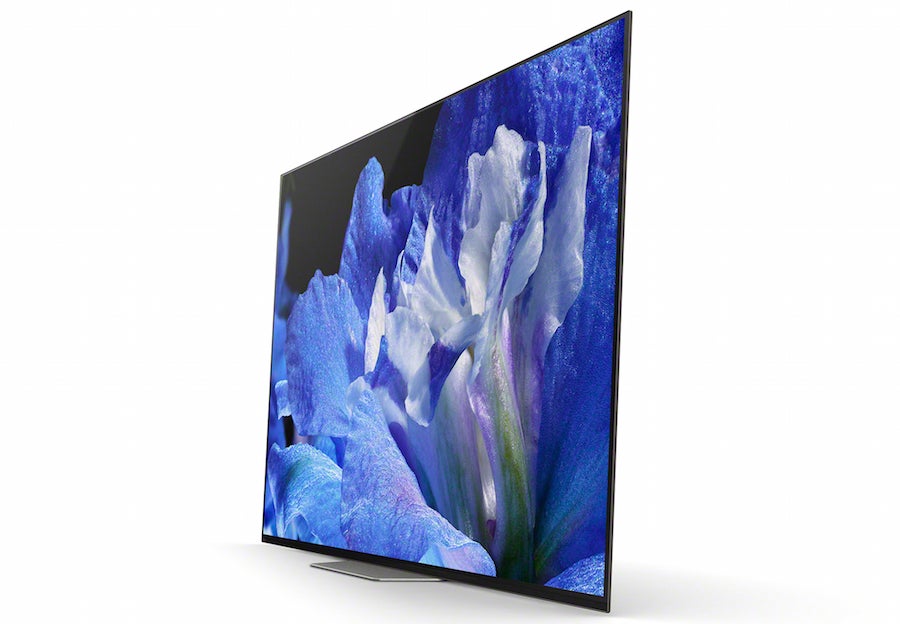
It struck me right away that the Sony KD-55AF8’s HDR pictures looked rather dull versus other recent HDR TVs –including the LG C8 OLED. Measuring its light output from a 10% white HDR window generates a peak brightness figure of 707 nits.
That’s pretty much identical to the figure I got from Sony’s A1 TVs. But it’s nearly 120 nits less than what LG’s C8 manages, and many hundreds of nits less than the Samsung Q9FN.
What’s more, running the KD-55AF8 alongside LG C8 makes the brightness difference look bigger than 120 nits. The LG’s pictures deliver a much higher average brightness level for HDR, and more strident brightness peaks. This helps it drive the picture off the screen with far more pop than the Sony. Colours have more volume and dynamism, too, and daylight scenes look more natural.
Crucially, the LG’s higher brightness floor also exposes some crushing of shadow detail on Sony’s set. This can leave dark picture elements on the KD-55AF8 looking a bit like black cut-outs when they appear against bright HDR backdrops.
There are positives to the KD-55AF8’s – possibly deliberately – limited brightness. It may contribute to the lack of noise in its pictures, for instance. It also means you don’t generally get any ‘bleaching’ in the brightest whites. And the most intense, bright colours escape that slightly forced look that the E8 occasionally exhibits.
For me, though, for all their stunning refinement, the Sony’s HDR pictures lack just a bit too much raw impact for comfort, especially if you’re viewing in a room with lights.
In some ways, the Sony KD-55AF8 makes a great gaming monitor. Its processing refinement can give you a new appreciation of the subtleties of today’s HDR and 4K graphics. However, the lack of brightness is, if anything, even more noticeable with gaming environments.
Also, its input lag measurements of around 30ms/45ms with 4K/HD gaming respectively are a little high by today’s standards.
Finally, the Sony KD-55AF8’s audio makes a mostly good case for Sony’s Acoustic Surface technology. The mid-range, in particular, is dynamic, detailed and expansive. It has enough breathing room to open up for action scenes, and can also handle music surprisingly well.
The woofer on the rear injects a solid amount of bass – although not quite as much, it seemed to me, as that of the A1.
The panel exciter technology can become overloaded and harsh, though, when playing densely soundtracked moments at high volumes.
Related: Best soundbars
Sony KD-55AF8 – Settings
The TV’s picture presets have been so well configured that there’s precious little left to do to get pictures looking great. Pick the Standard preset or, if you want a slightly more accurate but less dramatic image, the Cinema option.
Then I’d suggest turning off the set’s noise reduction systems. Also, if you decide to use Sony’s Motionflow processing, stick with either its Standard or True Cinema modes for the most natural results.
Finally, turn the set’s Real Colour feature to Low from the Medium default.
Why buy the Sony KD-55AF8?
Stunning picture processing helps the Sony KD-55AF8 to deliver arguably the most all-round refined pictures in the OLED TV world. This is, of course, highlights just how good OLED has the potential to be.
It will also likely be enough to win the set a devoted fan base – especially among home cinema fans looking for a TV to go into a predominantly dark room.
The fact that Sony hasn’t pushed for more brightness from its second OLED series is a little disappointing, however. It kind of makes the set feel more like a 2017 hero than a 2018 envelope pusher.
At £2499, it’s £500 cheaper than the 55-inch version of the LG C8 OLED (at launch). That’s a compelling price difference – especially given the Sony’s video processing prowess.
It’s cheaper than the 55-inch Samsung Q9FN LCD model, too. Although that set is capable of far more dynamic HDR pictures, offers a far superior smart system, and carries a screen filter that does an outstanding job of neutering ambient light and reflections.
Before you go out and splash the cash, it’s also worth waiting for the Sony AF9, which was only just reviewed. It’s likely to be a real upgrade. You can read it here: Sony’s new Master Series 4K TVs could be the ultimate way to watch Netflix.
Related: Sony TVs 2018: What you need to know before you buy Bravia
Verdict
Exquisite pictures, but the lack of brightness limits HDR impact – especially in bright-room environments.
How we test televisions
We test every TV we review thoroughly over an extended period of time. We use industry standard tests to compare features properly. We’ll always tell you what we find. We never, ever, accept money to review a product.
Trusted Score
Score in detail
-
Features 8
-
Value 9
-
Smart TV 7
-
Image Quality 8
-
Design 8
-
Sound Quality 8
Features
| Size (Inch) | 55 |
| Display Type | OLED |
| Max. Resolution | 3840 x 2160 |
| Full HD 1080p | Yes (actually 4K) |
| Digital Tuner | Yes |
| Freeview HD | Yes |
| 3D Ready | No |
| Refresh Rate (Hertz) | 100 |
Connectivity
| HDMI | 4 |
| Digital Audio Out | Yes (optical) |
| Ethernet | Yes |
| WiFi | Yes |
Physical Specifications
| Height (Millimeter) | 712 |
| Width (Millimeter) | 1226 |
| Depth (Millimeter) | 55 |
| Weight (Gram) | 22200 |

